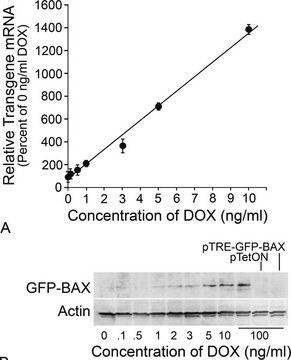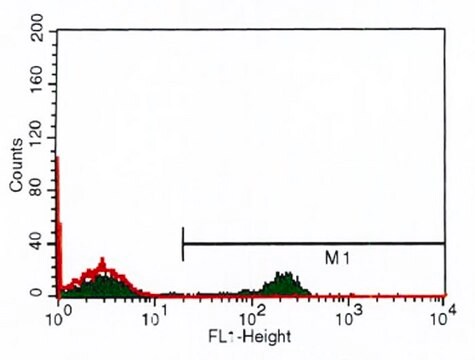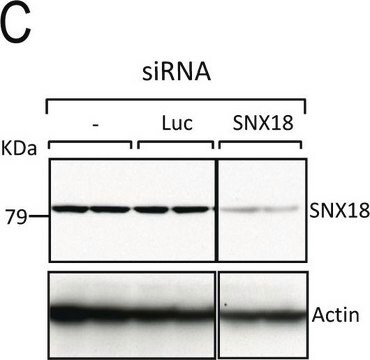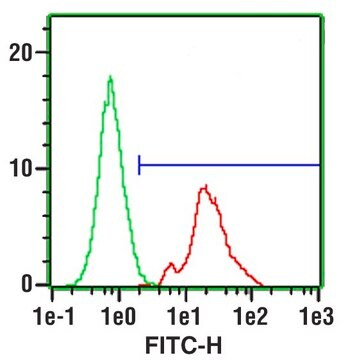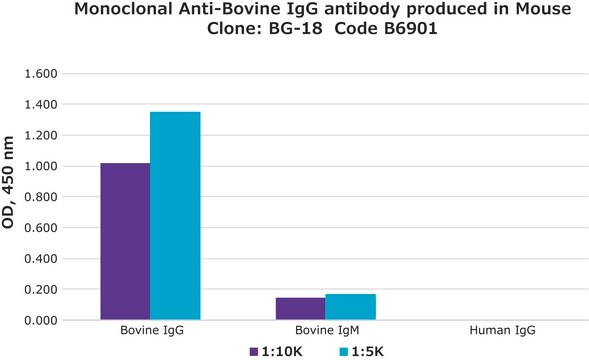B5645
Anti-Bovine IgG (whole molecule) antibody produced in rabbit
affinity isolated antibody, buffered aqueous solution
Iniciar sesiónpara Ver la Fijación de precios por contrato y de la organización
About This Item
Productos recomendados
biological source
rabbit
conjugate
unconjugated
antibody form
affinity isolated antibody
antibody product type
secondary antibodies
clone
polyclonal
form
buffered aqueous solution
technique(s)
indirect ELISA: 1:20,000
shipped in
dry ice
storage temp.
−20°C
target post-translational modification
unmodified
¿Está buscando productos similares? Visita Guía de comparación de productos
General description
IgG (immunoglobulin G) contributes to 10-20% of plasma protein and is regarded as one of the most predominant serum proteins. It consists of four subclasses: IgG1, IgG2, IgG3 and IgG4. The IgG structure possesses four polypeptide chains containing two identical γ heavy (H) chains and two identical κ or λ light (L) chains of 50 kDa and 25 kDa, respectively.
Immunoglobulin G (IgG) is the most important type of glycoprotein antibody present in human serum. It is found in blood and has four polypeptide chains.The light and heavy chains are interconnected by disulfide bonds. IgG has the longest serum half-life when compared to other immunoglobulins.
Application
Anti-Bovine IgG (whole molecule) antibody produced in rabbit has been used to coat immulon 4HBX plates in serum antibody enzyme-linked immunosorbent assay (ELISA) and western blotting.
Anti-Bovine IgG (whole molecule) antibody produced in rabbit is suitable for ELISA at a working dilution of 1:20,000. It may be used for immunohistochemistry of formalin-fixed, paraffin-embedded sections at a dilution of 1:1000.
Biochem/physiol Actions
Immunoglobulin G (IgG) initiates the classical pathway of the complement system and also nullifies virus particles and toxins. Maternal IgG is transferred to the fetus through the placenta that is critical for the immune defense of the neonate against infections. IgG modulates antibody-dependent cell-mediated cytotoxicity (ADCC) and might be associated with allergy. Digestion of IgG by papain releases fragment antigen-binding (Fab) and pepsin digestion of IgG produces crystallizable (fc) fragment and a single dimeric F(ab)2. IgG levels in severe acute respiratory syndrome coronavirus (SARS-CoV)-2 infected patients may be used to evaluate the severity and prognosis of coronavirus disease 2019 (COVID-19).
Physical form
Solution in 0.01 M phosphate buffered saline, pH 7.4, containing 15 mM sodium azide as preservative
Storage and Stability
For continuous use, store at 2-8 °C for up to one month. For extended storage, the solution may be frozen in working aliquots. Repeated freezing and thawing, or storage in "frost-free" freezers,is not recommended. If slight turbidity occurs upon prolonged storage, clarify the solution by centrifugation before use.
Disclaimer
Unless otherwise stated in our catalog or other company documentation accompanying the product(s), our products are intended for research use only and are not to be used for any other purpose, which includes but is not limited to, unauthorized commercial uses, in vitro diagnostic uses, ex vivo or in vivo therapeutic uses or any type of consumption or application to humans or animals.
¿No encuentra el producto adecuado?
Pruebe nuestro Herramienta de selección de productos.
Storage Class
10 - Combustible liquids
wgk_germany
nwg
flash_point_f
Not applicable
flash_point_c
Not applicable
Elija entre una de las versiones más recientes:
¿Ya tiene este producto?
Encuentre la documentación para los productos que ha comprado recientemente en la Biblioteca de documentos.
Katrin Spiesberger et al.
PloS one, 10(10), e0140471-e0140471 (2015-10-16)
30 years ago, the potential of bispecific antibodies to engage cytotoxic T cells for the lysis of cancer cells was discovered. Today a variety of bispecific antibodies against diverse cell surface structures have been developed, the majority of them produced
Low expression of secreted frizzled-related protein 2 and nuclear accumulation of beta-catenin in aggressive nonfunctioning pituitary adenoma
Wu Y, et al.
Oncology Letters, 12(1), 199-206 (2016)
Formalin-inactivated bovine RSV vaccine enhances a Th2 mediated immune response in infected cattle
Kalina WV, et al.
Vaccine, 22(11-12), 1465-1474 (2004)
B W Blais
Journal of food protection, 62(4), 386-389 (1999-07-27)
An enzyme immunoassay system based on the use of a macroporous swab as a solid phase for the capture and subsequent immunoenzymatic detection of immunoglobulin G (IgG) from meat residues on food contact surfaces was developed as a hygiene-monitoring tool.
Transfer of maternal colostral leukocytes promotes development of the neonatal immune system: Part II. Effects on neonatal lymphocytes
Reber AJ, et al.
Veterinary Immunology and Immunopathology, 123(3-4), 305-313 (2008)
Nuestro equipo de científicos tiene experiencia en todas las áreas de investigación: Ciencias de la vida, Ciencia de los materiales, Síntesis química, Cromatografía, Analítica y muchas otras.
Póngase en contacto con el Servicio técnico